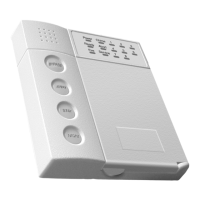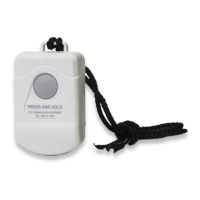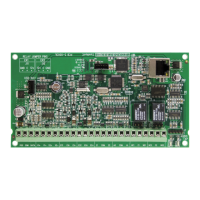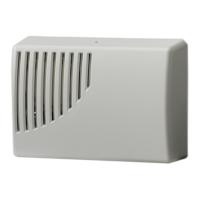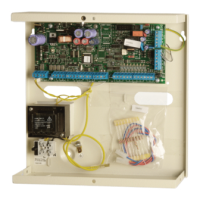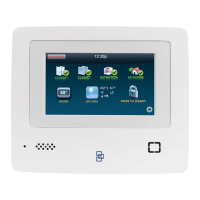48 Concord 4 User Manual
The system master code can view all events from any partition. The partition
master code can only view global system events and events related to their
respective partition. Regular user codes cannot view event history.
Note: Fixed display touchpads cannot be used to view the event history.
All partitions can view event history simultaneously, but only one touchpad at a
time can view the history in each partition. While the event history is being
viewed, all other controlling sources are disabled (except for panic alarm buttons)
and nonviewing touchpads display VIEWING EVENT BUFFER.
To view event history:
1. The current partition must be in Level 1 (disarmed).
2. At an alphanumeric touchpad, press 8, system or partition master code, 8.
The touchpad displays VIEWING EVENT BUFFER followed by the event
description, date/time or details (user, source, zone, etc.). The most recent
event appears first.
3. Scroll through the events by pressing the A (back) and B (forward) keys. The
C key is used to toggle the second line display between Date/Time and
Details.
4. Press * to exit viewing event history.
The viewing event history mode will exit automatically after 1 minute of
inactivity or when an alarm occurs.
Table 7 on page 49 is a comprehensive list of displayed events and their
associated details (partition, current arming level, zone, bus unit number, source,
and user). If details are displayed for an event, an X will appear in the table.
• Partitions will display as P1 to P6, depending in which partition the event
occurred.
• Current arming level will display as Lx, where x is the current arming level of
the event.
• Zone will display as Zx, where x is the zone of the event.
• Bus unit number will display as Bx, where x is the unit number of the bus
device.
• Source will display as Sxxx, where xxx is the source number in the event (see
Table 9 on page 51 for more information).
• User will display as Uxxx, where xxx is the user number in the event (see
Table 8 on page 51 for more information).
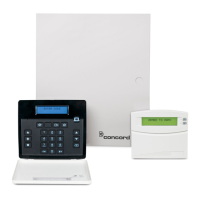
